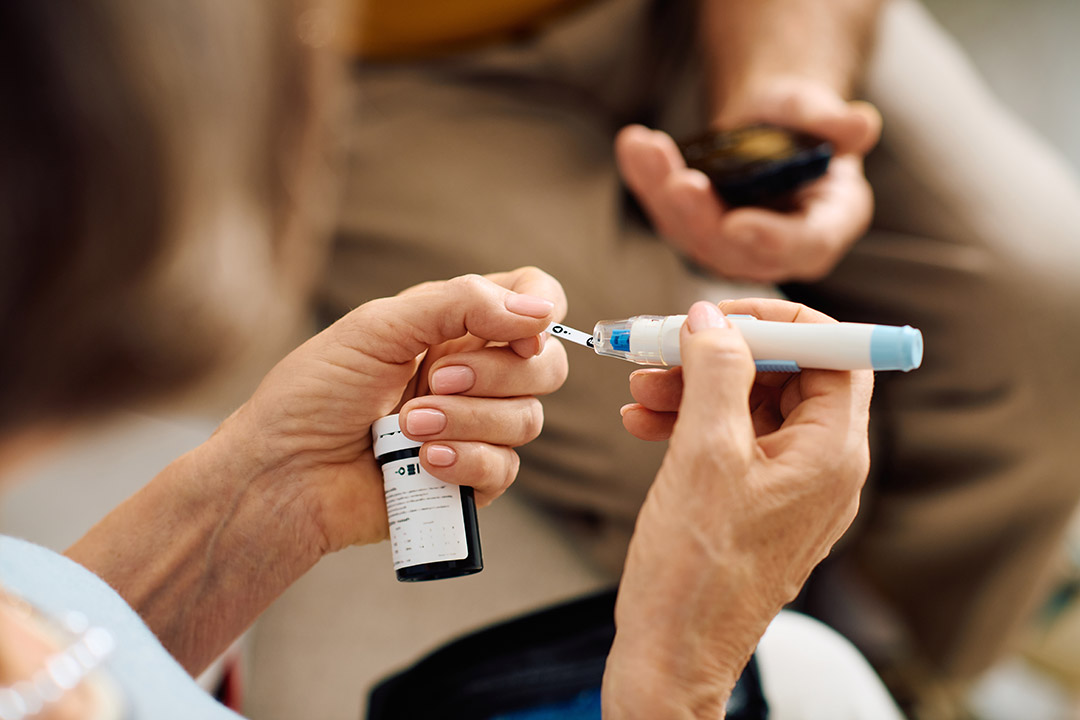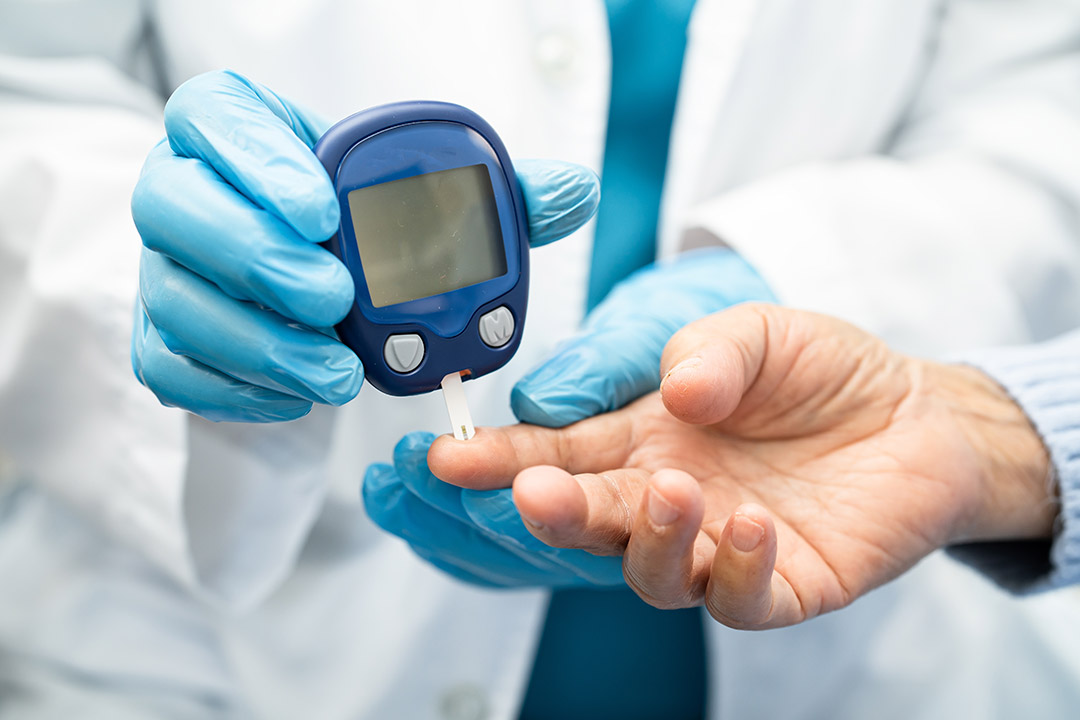Are you postponing that dream vacation because you are terrified your blood sugar will spike mid-flight? Wondering if airport security will confiscate your insulin, leaving you stranded without life-saving medication? You are not imagining these risks; cabin pressure changes, irregular meal schedules, and stress can genuinely wreak havoc on your glucose levels. But here is what thousands of diabetic travelers wish they knew: with the right preparation, flying can be just as safe as staying home. When complications do arise at cruising altitude, MTI 24/7's medical flight services ensure you are never alone in managing your diabetes emergency.
Can diabetics fly safely? Everything you need to know
Most diabetics can fly safely with proper preparation, but those with recent hospitalizations, frequent severe hypoglycemic episodes, or uncontrolled complications requiring intensive monitoring should avoid commercial aviation and consider specialized air ambulance services instead.
Flying significantly affects insulin resistance through cabin pressure changes, stress hormones, dehydration, and disrupted meal timing, requiring diabetic travelers to pack triple their medication supply, monitor blood sugar every 1-2 hours during flight, and adjust dosing for time zone changes.
MTI 24/7 provides professional medical escorts who actively manage diabetes throughout flights and fully-equipped air ambulances for critical care patients, ensuring safe transport when commercial airlines cannot accommodate complex diabetic conditions.
Diabetes: What every traveler must know
 Diabetes is not just "high blood sugar"; it is your body's inability to properly process glucose, the fuel your cells desperately need to function. Most travelers with diabetes receive generic advice that ignores the unique physiological chaos of air travel: cabin pressure drops, dehydration accelerates, stress hormones surge, and meal schedules vanish.
Diabetes is not just "high blood sugar"; it is your body's inability to properly process glucose, the fuel your cells desperately need to function. Most travelers with diabetes receive generic advice that ignores the unique physiological chaos of air travel: cabin pressure drops, dehydration accelerates, stress hormones surge, and meal schedules vanish.
The difference between diabetic passengers who arrive safely versus those requiring emergency landings often comes down to five essential factors:
Types of diabetes: Type 1 (autoimmune destruction of insulin-producing cells), Type 2 (insulin resistance and inadequate production), Gestational (pregnancy-induced glucose intolerance), and MODY (genetic forms affecting younger patients).
Warning symptoms: Excessive thirst, frequent urination, unexplained weight loss, blurred vision, slow-healing wounds, and fatigue that does not improve with rest.
Who is at risk: 537 million adults worldwide, including 1 in 10 Americans, with numbers skyrocketing among travelers over 45, those with family history, and frequent business flyers facing constant stress.
Life-threatening complications: Diabetic ketoacidosis, severe hypoglycemia, cardiovascular events, and circulation problems that can escalate rapidly during flight.
Treatment arsenal: Insulin therapy, oral medications, continuous glucose monitors, dietary management, and emergency protocols that must adapt to changing time zones.
Before you book that ticket, there is one question every diabetic traveler asks but few get an honest answer to.
Can you fly with diabetes?
Most diabetics can fly safely, but airlines will not tell you about the cases where passengers should not have boarded. Every year, diabetic emergencies force flight diversions, not because diabetes itself is dangerous at altitude, but because travelers ignore the warning signs that should ground them.
When flying is safe:
Controlled blood pressure below 160/100 mmHg.
No active diabetic foot ulcers or recent amputations.
Mental clarity to manage your condition independently.
Kidney function adequate enough to handle dehydration stress.
No recent diabetic ketoacidosis episodes within the past month.
HbA1c levels below 9% with stable glucose readings for at least two weeks.
Functional hypoglycemia awareness (you can still feel when your blood sugar drops).
When you should stay grounded:
Kidney dialysis scheduled within 48 hours of travel.
Uncontrolled blood pressure above 180/110 mmHg.
Recent hospitalization for diabetic complications within 30 days.
Severe peripheral neuropathy affecting your ability to walk safely.
Altered mental status or confusion related to glucose fluctuations.
Active diabetic retinopathy with recent bleeding or vision changes.
Frequent severe hypoglycemic episodes requiring assistance from others.
Even if you meet all safety criteria, flying still carries unique risks that can turn manageable diabetes into a crisis without proper preparation.
What are the risks of flying with uncontrolled diabetes?
 Flying with poorly managed diabetes is not just risky; it is stacking the odds against your body when it needs stability most. At 35,000 feet, your margin for error shrinks to zero, and what might be a manageable glucose spike on the ground becomes a life-threatening emergency when you are hours from the nearest hospital.
Flying with poorly managed diabetes is not just risky; it is stacking the odds against your body when it needs stability most. At 35,000 feet, your margin for error shrinks to zero, and what might be a manageable glucose spike on the ground becomes a life-threatening emergency when you are hours from the nearest hospital.
Immediate in-flight dangers:
Cardiac events from uncontrolled blood pressure spikes.
Blood clots forming in legs due to poor circulation and immobility.
Inability to self-administer medication due to confusion or tremors.
Diabetic ketoacidosis triggered by dehydration and stress hormones
Severe hypoglycemia leading to unconsciousness with no IV glucose available.
Sudden vision changes from diabetic retinopathy worsened by cabin pressure.
Does flying affect your insulin resistance?
Absolutely, and in ways that catch even experienced diabetics off guard. Cabin pressure equivalent to 8,000 feet altitude does not just affect your ears; it fundamentally alters how your body processes insulin. Stress hormones like cortisol and adrenaline flood your system during takeoff, landing, and turbulence, making cells more resistant to insulin's effects.
Add chronic dehydration from recycled cabin air, disrupted sleep cycles crossing time zones, and irregular meal timing, and your insulin needs can spike 20-30% higher than normal. Your usual dosing becomes inadequate exactly when medical help is least accessible.
The worst part? These changes can persist for days after landing, turning your post-flight recovery into another health crisis.
How to fly safely with diabetes: Essential tips
Smart diabetic travelers do not just pack extra supplies; they engineer their entire journey around glucose stability. While others wing it and hope for the best, you need a system that accounts for every variable that could derail your blood sugar control.
Pre-flight preparation:
Download offline glucose tracking apps that work without internet connection.
Pack triple your usual medication supply split between carry-on and checked luggage.
Carry prescription letters from your doctor for all diabetes equipment and medications.
Set phone alarms for medication times in your destination time zone starting 48 hours early.
Test blood glucose every 2 hours for 24 hours before departure to establish baseline patterns.
During flight strategy:
Check blood sugar every 1-2 hours regardless of how you feel.
Keep glucose tablets in three separate pockets for emergency access.
Drink 8 ounces of water per hour of flight time to combat dehydration.
Walk the aisle every 60 minutes to prevent blood clots and improve circulation.
Refuse airline meals and bring your own carb-counted snacks with known glucose impact.
Post-landing protocol:
Test immediately upon arrival before collecting luggage.
Monitor for delayed altitude effects that can destabilize glucose for 48-72 hours.
Adjust medication timing gradually over 2-3 days rather than shocking your system.
Can you bring your diabetes medicine on the flight?
Not only can you bring diabetes medications, but TSA and international aviation authorities mandate special accommodations for diabetic passengers. Insulin, glucose tablets, testing supplies, and injection devices are exempt from liquid restrictions when properly declared.
Pack medications in original pharmacy bottles with clear labels, carry a physician's letter explaining your condition, and never put life-saving supplies in checked baggage where temperature extremes or lost luggage could strand you without medication.
Also research pharmacy locations at your destination and carry generic medication names in the local language; because running out of insulin in a foreign country is not just inconvenient, it is potentially fatal.
Why professional medical escorts make the difference for diabetic travelers
The moment your blood sugar starts spiraling at 35,000 feet, flight attendants become useless. They can offer orange juice and call for a doctor, but they cannot calculate insulin-to-carb ratios, recognize impending ketoacidosis, or make split-second medication adjustments that prevent medical emergencies.
What MTI 24/7 medical escorts actually do:
Our certified medical escorts actively manage your diabetes throughout the entire flight. While you focus on enjoying your journey, our escorts monitor your glucose levels, calculate precise insulin timing adjustments for time zone changes, and coordinate meal schedules that maintain stable blood sugar regardless of flight delays or service disruptions.
Real-time crisis management:
Emergency glucagon administration if severe low blood sugar strikes.
IV access and fluid management for diabetic ketoacidosis prevention.
Coordination with flight crew for emergency landing decisions if needed.
Instant recognition of hypoglycemic symptoms before you lose consciousness.
Direct communication with ground-based endocrinologists via satellite connection.
Seamless insulin and meal coordination: MTI 24/7 escorts pre-plan your entire nutritional strategy based on flight duration, departure times, and destination time zone. We carry backup insulin supplies, coordinate with airline catering for diabetic-appropriate meals, and adjust dosing schedules in real-time as flight conditions change.
When a diabetic emergency occurs mid-flight, the difference between a controlled situation and a life-threatening crisis often comes down to having trained medical expertise sitting in the seat next to you.
When do diabetic patients need an air ambulance flight?
Most diabetic travelers assume commercial flights are their only option, but some conditions make stepping onto a passenger aircraft particularly risky. MTI 24/7’s air ambulances are specialized medical aircraft equipped with intensive care units, staffed by critical care physicians and nurses who can manage complex diabetic emergencies during flight.
Critical situations requiring air ambulance:
Recent diabetic coma or severe ketoacidosis: Commercial flights cannot accommodate patients recovering from major metabolic crises within 7-14 days.
Brittle diabetes with frequent emergency episodes: Multiple severe hypoglycemic events requiring paramedic intervention within the past month.
Active diabetic complications: Severe retinopathy causing vision loss, kidney failure requiring dialysis, or infected foot ulcers with sepsis risk.
Medication-dependent critical care: Patients requiring continuous IV insulin drips, frequent blood gas monitoring, or ventilator support.
Why commercial airlines refuse these patients
Airlines legally cannot accept passengers who might require emergency medical interventions they cannot provide. Flight crews lack advanced cardiac monitors, IV fluid capabilities, or emergency medications needed for diabetic crises. A passenger coding from diabetic ketoacidosis forces costly emergency landings that airlines desperately want to avoid.
Air ambulance benefits:
Our medical jets transform into flying intensive care units equipped with ventilators, cardiac monitors, IV pumps, and emergency medications. Board-certified physicians and critical care nurses provide hospital-level diabetes management at altitude, ensuring your condition stabilizes during transport rather than deteriorating.
When your diabetes moves beyond manageable into life-threatening territory, commercial aviation stops being an option; it becomes an unacceptable risk only specialized air ambulance services can mitigate.
Contact us now to book your flight!

Whether you need a skilled medical escort for peace of mind or a fully-equipped air ambulance for critical care transport, MTI 24/7's specialized teams are standing by 24/7 to ensure your safe arrival. Contact us and let our medical aviation experts handle the risks so you can focus on reaching your destination safely.
Reach us by:
Phone: USA: +16468635532 / UK: +442036080959
Email: info@mti-247.com
Our contact form
:quality(75))
:quality(75))